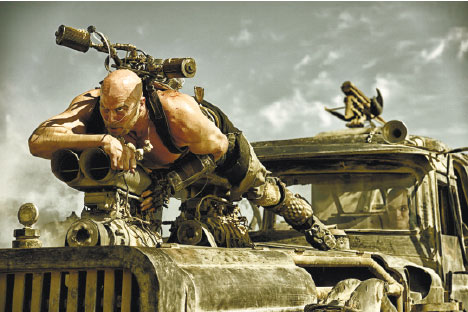47 Ronin
Reeves comes off ‘bogus’ in retelling of Japanese legend
IN JAPAN, the story of the 47 ronin is so central to the country’s national identity that a special word exists for the act of retelling it: Chushingura. But despite this long tradition of flexible reinterpretation, the Hollywood-backed “47 Ronin” takes such liberties with the underlying legend that a different term comes to mind, one better suited to American actor Keanu Reeves’ involvement: “bogus.” So far, Japanese audiences have been slow to embrace a CG-heavy version of the story that offers Keanu as a previously unsung “half-breed” accomplice. Meanwhile, domestic crowds are being deliberately misled to think he’s the star—a high-stakes bait-and-switch sure to backfire on this narratively stiff but compositionally dazzling production.
In theory, director Carl Rinsch’s considerable visual talents should have been the draw, with the expectation that the first-time director would deliver on the promise of his dazzling short film “The Gift.” Sure enough, in his hands, “47 Ronin” rivals the epic martial-arts films of Tsui Hark or Zhang Yimou in terms of sheer spectacle.
But as the budget crept ever skyward, reportedly reaching as high as $225 million, Universal’s marketing department shifted into panic mode, opting to disguise the fact that the true heroes of this epic Japanese legend were themselves Japanese, and positioning Reeves’ character – described as the shameful “love of one night” between an English sailor and a local peasant girl — as a superficial ploy to attract international crowds.
Like all Chushingura, “47 Ronin” recounts the tragic Ako incident (spoilers ahead), during which Lord Asano (Min Tanaka) was forced to commit seppuku after illegally striking an unarmed royal guest, leaving the 47 samurai who had been under his command without a master. After more than a year adrift, these ronin (as disgraced samurai are known) returned, staging a daring night raid in which they took their revenge, vindicated their master and were ultimately forced to sacrifice their own lives in punishment.
Sanada plays Oishi, leader of the desperate group of ronin, who turns to mysterious stranger Kai (Reeves) for help when planning his coup. With three writers credited (Chris Morgan and Walter Hamada for story, “Drive” scribe Hossein Amini and Morgan for the script itself), the project resists easy reverse-engineering, though given Reeves’ international profile, it’s no surprise that he was given the film’s romantic subplot.
Kai’s love is star-crossed for multiple reasons—not least of which that nearly all the male leads end up dead, either in battle or by ritual suicide — though it doesn’t help matters that the object of his affection is Asano’s daughter, Mika (an unremarkable Kou Shibasaki), already promised to Oishi.
Perhaps it is this connection that inspires Kai, whose lowly class separates him from the esteemed samurai, to repeatedly risk his life for Asano’s honor. Though Rinsch shows no great strength in working with actors, he can build a setpiece on par with those of directors decades more experienced, and long before Asano has been given the chance to publicly disembowel himself (an act that, like so much of the bloodletting, is “tastefully” left offscreen), Kai has already slain a rampaging CG monstrosity and faced off against a 10-foot silver-armored samurai.
The key difference between most Chushingura comes in the speculated motives behind Asano’s initial attack upon his rival in the palace – the act that sets the entire tragedy in motion. To this fantasy-infused telling, Rinsch introduces the notion of witchcraft, casting Rinko Kikuchi as a deliciously evil witch with ambiguous powers. Basically, anything that might look cool when rendered by the industry’s finest effects houses is fair game, whether that means the witch conjuring iridescent spiders out of thin air or transforming herself into a three-dimensional dragon.
As impressive as these visual elements prove to be, the film struggles to grab and maintain audiences’ interest, whether or not they know the underlying legend by heart. (AP)




